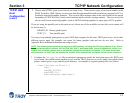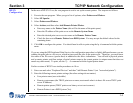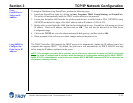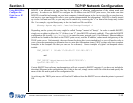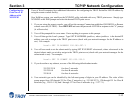
Section 3 TCP/IP Network Configuration
PocketPro 100S Administrator’s Guide -- Document #40165-110 Rev. A 3-10
Other Non-
Standard
Configuration
Options (cont.)
On some systems it is also necessary to start the daemon. This is done on Berkeley-compatible UNIX systems
with the lpc start command as shown in the following example:
lpc start laser1
5. The final step before printing is to add the IP address to the TROY print server. Consult with your system
administrator before assigning an IP address to avoid conflicts with other devices. If your network does not
have an officially assigned block of IP addresses, you may use any unique address between 192.168.254.1
and 192.168.254.254 (this is a reserved range of Class C addresses for private networks that are not connected
to the Internet per RFC 1918; note that you must also assign your host computer an IP address in this range).
The IP address can be set in any of the following ways:
ExtendView
XAdmin32
HP JetAdmin
DHCP
The UNIX arp and ping commands
Reverse Arp (rarp)
BOOTP
TROY XCONFIG NetWare utility
The easiest way to configure the IP address is using either ExtendView, XAdmin32, or JetAdmin as described in
Section 2. The remaining configuration methods are described in the following paragraphs.
NOTE: The IP address you assign to the print server must be on the same logical network as your host computers
(e.g., If your host has an IP address of 192.189.207.3, the TROY print server should have an IP of 192.189.207.x,
where x is an integer between 1 and 254), or you must properly configure your router to work with the TROY print
server.



